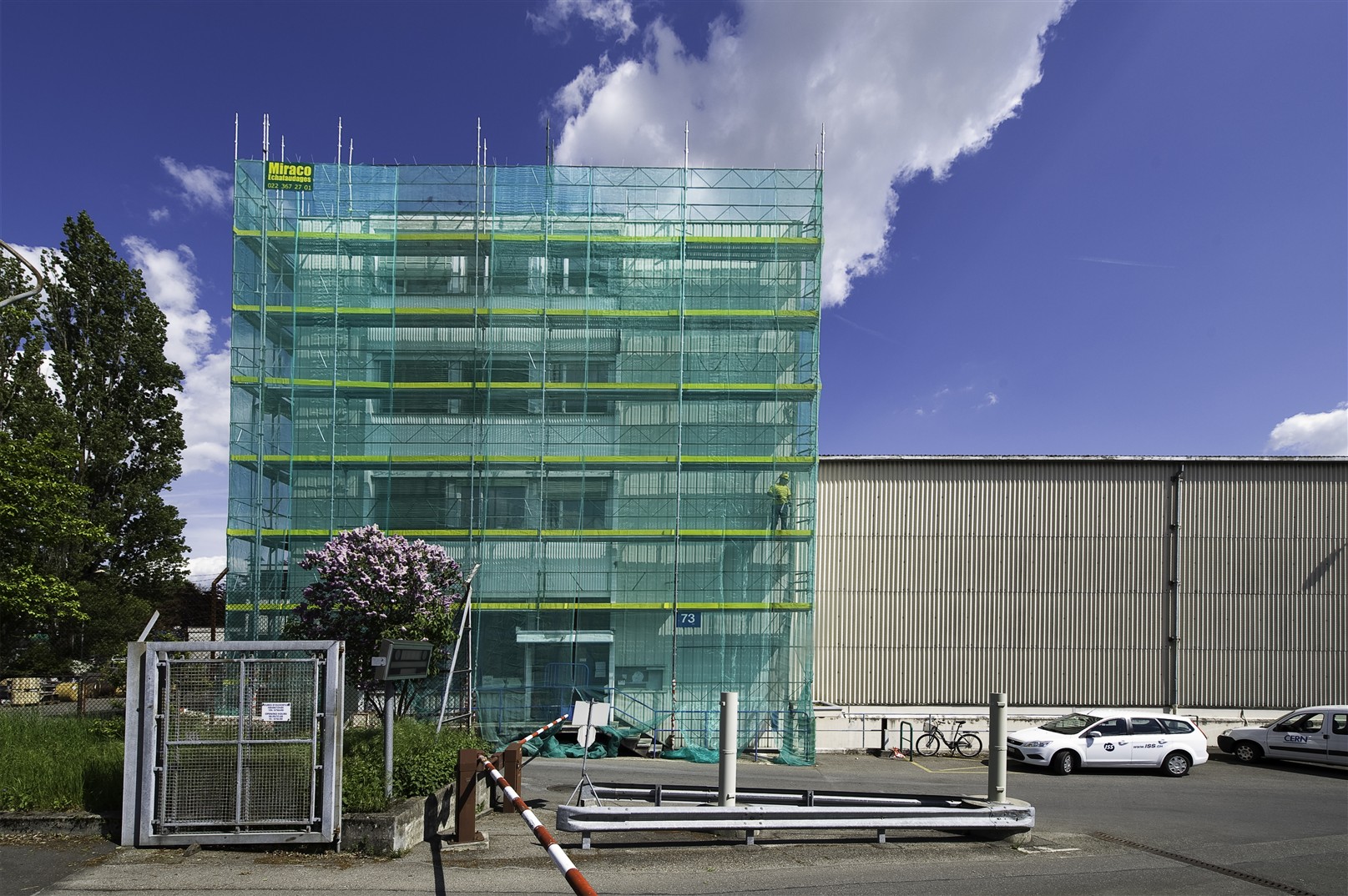Sprucing up the site


At first glance visitors may be underwhelmed by CERN, with its ageing offices and ramshackle-looking buildings. It is only when they visit the accelerators and experiments that they see the really impressive and high-tech side of CERN.
Since 2001 it has been especially true that budgets were focused on the LHC project, and site maintenance and consolidation had to get by on what was left. This year, however, a new long-term consolidation plan has been approved with a ten-fold increase in budget compared to previous years. This budget is already available in 2009.
"Some parts of the CERN infrastructure are more than 50 years old," explains Paul Pepinster, Section Leader of Site Maintenance and Work, who is in charge of the consolidation project in the GS Department’s SEM group. "When infrastructure reaches the end of its life, it has to be replaced or completely refurbished. The expected lifetime of things like roofs is only about 20 – 25 years. Considerable repair work has already been done on the SPS-era buildings, which date back to the 1970s, but some buildings from the sixties still need to be repaired. The LEP-era buildings’ roofs are also fast approaching the end of their lifetime".
The buildings related to the accelerators and experiments will receive attention first, to deal with problems such as leaking roofs. But outdated infrastructure and obsolete technical facilities can be found in buildings CERN-wide. Heating, piping, electrical equipment as well as sanitary facilities will also be renewed with modern, energy- saving technology.
"There has also been a clear shift to a more environmentally friendly approach," says Pepinster. "We have to overcome the mentality that wasted lighting is negligible compared to the huge amounts used in the accelerators and the experiments. Today it is important to save energy wherever possible." One of the ways the SEM group hopes to make CERN a bit greener is by progressively replacing the ageing street and indoor lighting by much more efficient low-energy lighting. There are also plans to reduce the water consumption at CERN.
This year the consolidation work will of course focus on the most urgent cases, including unsafe or dangerous facilities. For example, the replacement of windows and the repair of façades that pose a risk of falling concrete will continue in order of priority.
Another major concern for the SEM group is the state of the many trees around the CERN site. Most of the poplars, which were planted in the 60s and 70s, are reaching the end of their life and pose a serious risk of falling. In fact, one poplar tree fell onto Building 101 in January, but luckily nobody was hurt and no major damage ocurred. The French national forestry office (ONF) surveyed all the poplars on the site and determined that at least 90% of the 300 trees would need to be cut down. But don’t worry; there will be a re-planting campaign with a variety of different species of trees to replace the felled poplars.
The Bulletin will be following the consolidation activities around the site with short updates in future issues.

